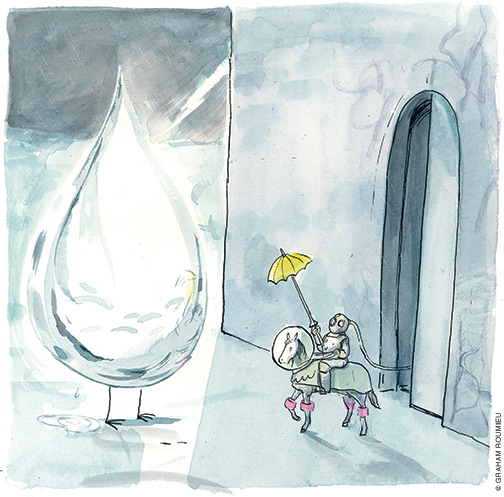
A new certificate program addresses urbanism’s latest watchword.
Pick a city, virtually any city, and odds are high that its movers and shakers are talking about “resilience.” Resilience offices have become fixtures of municipal government in places as different as Atlanta and Addis Ababa. According to the Rockefeller Foundation, politicos and business boosters are touting “resilience strategies” to attract outside investment to cities ranging from Semarang, Indonesia, to Pittsburgh, Pennsylvania.
Fittingly for a term that encompasses readiness for sudden shocks (flooding, earthquakes) and remedies for chronic stresses (endemic violence, overloaded public transit), resilience planning comes in many forms. It informs climate-related construction standards for city buildings in New York, green-roof incentive schemes in Chicago, and bike-share programs everywhere.
But mostly, as Howard Neukrug CE’78 observed during a January symposium titled “Building Resilience in Design”—presented by PennDesign with Rockefeller Foundation support—“no one talks about cities and resilience without talking about water.”
As founding director of the Water Center at Penn and former CEO of the Philadelphia Water Department—where he established an innovative stormwater management program emphasizing porous pavement and rain gardens instead of a single-minded focus on traditional engineering solutions—Neukrug can be forgiven for being biased. Yet the watery aspects of climate change loomed large at the all-day roundtable, which served as the official launch of PennDesign’s new Urban Resilience Certificate program. Presentations by urban planners, architects, and engineers—plus an activist, a sociologist, and a risk analyst—also touched on issues ranging from forest fires, to the urban heat island effect, to coral reef restoration.
The new certificate program was initiated by professor of architecture and urban design and former School of Design dean Marilyn Jordan Taylor, and made possible by a grant from the Rockefeller Foundation. Taylor observed that the term resilience gained traction in the wake of Hurricane Sandy in 2012, as environmentally oriented urbanists advocated for proactive planning that would address long-term threats posed by climate change and other large-scale phenomena.
The program’s director, associate professor Matthijs Bouw (who hails from the waterlogged Netherlands, where people have spent “one thousand years working at these things”), provided an overview of the academic topics the certificate program will cover, including the science of decision-making, unpredictability, systems thinking, social justice, and the design and planning aspects of water policy and energy management.
Attendees—made up largely of students and faculty in related fields—showed an inclination to frame the academic content in terms of real-world challenges. How can designers work around cumbersome zoning regulations? When a municipality needs new affordable housing units but its only vacant land abuts a flood plain, what’s the best way forward?
“A big focus … has to be about the overlap of practice and theory,” observed PennDesign lecturer Rebecca Popowsky GAr’10 GLA’10. “Having this mix of people at the table can help pinpoint moments of opportunity to translate ideas into projects.”
Taylor advocated building business cases for resiliency initiatives, emphasizing the potential costs of muddling along with the status quo. “It’s useful,” she said, “to think in terms of ‘more resilient equals less vulnerable.’”
Carolyn Kousky, director of the policy incubator at the Wharton Risk Management and Decision Processes Center, also addressed the business aspect of conservation. She described a novel project spearheaded by The Nature Conservancy (along with the Rockefeller Foundation) to safeguard both coral reefs in Mexico and the tourist industry that depends on them. A public-private partnership established a trust funded by tourist taxes to finance ongoing maintenance of reefs and beaches, as well as to purchase insurance to ensure their restoration after extreme storms hit.
Whatever the approach, whatever the discipline, participants agreed on one thing: the necessity of being proactive. “We need to keep the design community involved so [the responses] are shovel-ready,” Neukrug said.
—JoAnn Greco




